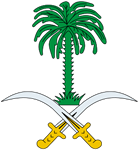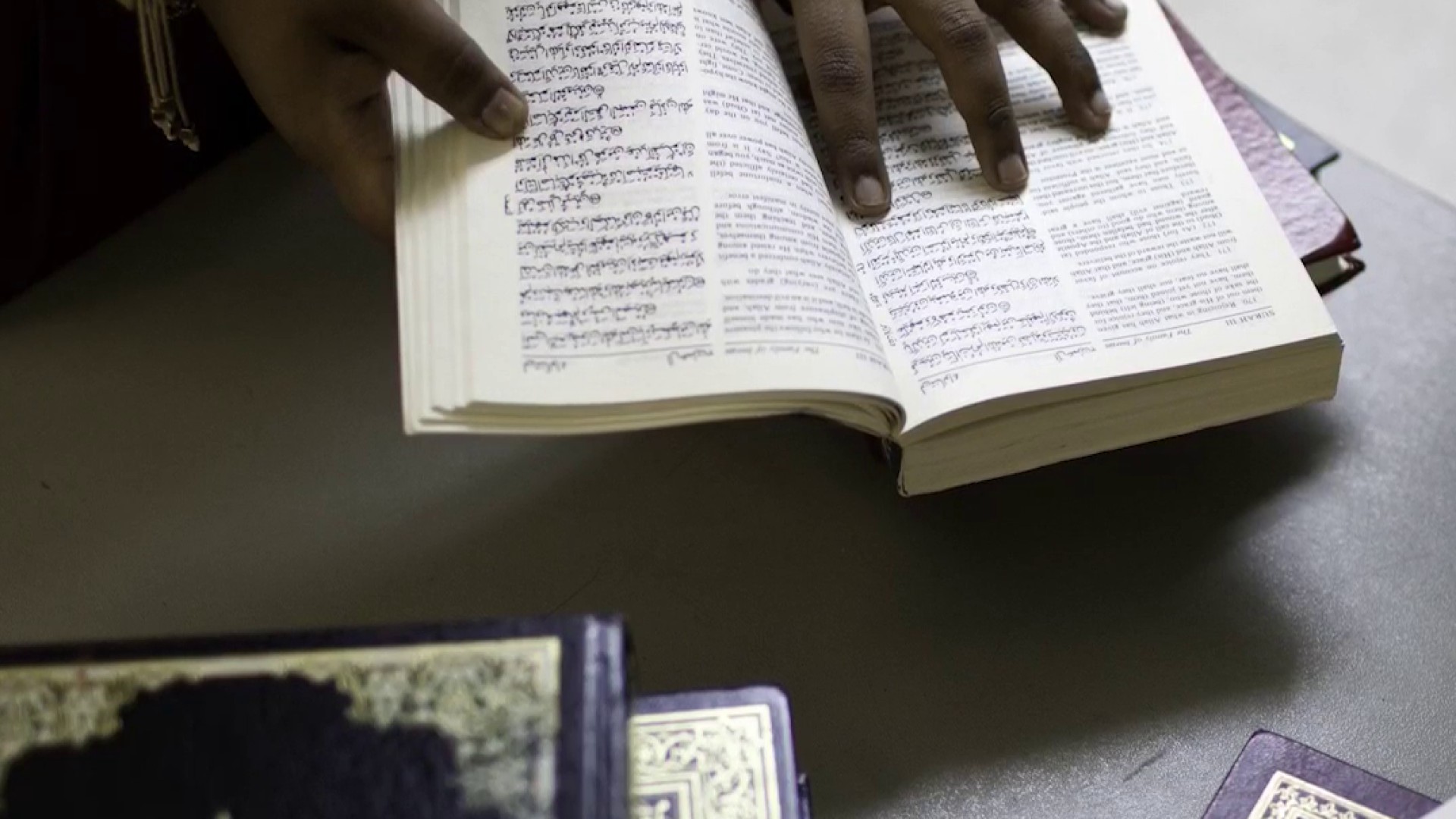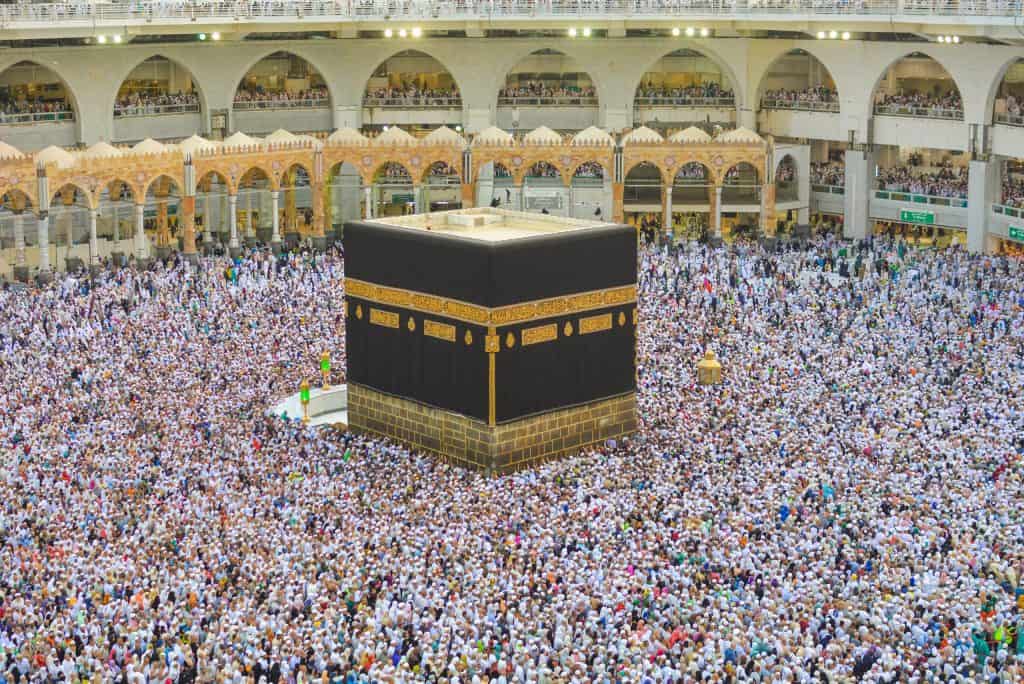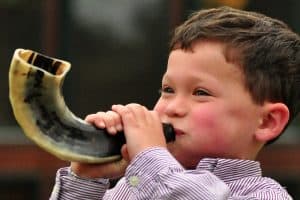
- Haajar and Ishmael
- Prophet Ibrahim builds the Kaaba
- After Ibrahim
- Period of Idolatry
- Kaaba rebuilt once more
- Cleansing of the Kaaba
- Preparation for Hajj
- Map of the KSA
- Outline Map of Makkah
- Al-Masjid Al-Haram
- Hajj al-Tamattu'
- Hajj al-Ifrad
- Hajj al-Qiran
- Tawaf al-Qudum
- Tawaf al-Ifadha
- Tawaf al-Wadaa
- Tawaf al-Nafl
- Tawaf al-Umrah
- Hajj & Modern Technology
- Hajj Service Providers
- Approved Hajj Travel Agents
- Location of Miqats
- Rituals of Umrah
- Umrah Service Providers
- Approved Umrah Travel Agents
- Responsibilities
- Preparations for Hajj
- Agreements with Hajj Missions
- Group Dispatching of Pilgrims
- Regulations of Umrah
- Instructions Regulating Pilgrimage Affairs
- Ministry Aims
- Ministry Website
- Regulations for Air Passenger Traffic
- Procedures for Travel Agents
- Rules for Travel Agents
- Supreme Hajj Committee
- Ministry of Culture & Information
- Ministry of Defence & Aviation
- Health Centers
- Safety Instructions
- An important statement
- Civil Defense
- General Passports Dept.
- General Traffic Dept.
- Hajj and Seasons Force
- Other Services
- Ministry of Religious Affairs
- Ministry of Telecommunications & Information Technology.
- National Guard
- KSA Red Crescent
- Hajj, Day by Day
- Ministry Safety Film
- Visual Tours
- General Questions
- Umrah Visas
- Health Matters
- General Safety Instructions
- Travel to the Kingdom
- Forbidden Imports
- Travel and Accommodation in the Holy Places
- Sacrificing
- Food and Drink
- Mobile Phones
- Getting Lost
- Lost Property
- Emergency Services Telephone Numbers
- Other Important Telephone Numbers
- Telephone Codes
- Means of Travel
- Health Considerations including inoculations
- Travel Items recommendations
- Accommodation
- Dispatching to Jamarat Bridge
- Rituals of Slaughtering
- Moving from Mina to Makkah
- Saudi Embassies
- Saudi Arabian Chambers of Commerce
- Foreign Embassies in the Kingdom of Saudi Arabia
- Complaints Authorities
- Useful Links
- Information Bureaux on the Internet
- Conflict with Makkans
- Consolidation
- Battle of Badr
- Battle of the Ditch
- The Taking of Makkah
- Death of the Prophet
- The Spread of Islam
- The Holy Qur'an
- Kingdom as Guardian of Holy Places
- Holy Mosque, Makkah
- Prophet's Mosque, Madinah
- Namirah Mosque
- Holy Mashaar Mosque
- Al-Khaif Mosque
- Al-Jamarat Plaza
- Al-Rahmah Mountain (Mount Arafat)
- Al Nur Mountain
- Thawr Mountain
- Mina Road Projects
- Leveling Mina area
- Al Muaissem parking
- Rock Cutting
- Electrical Power
- Main Control Center
- Widening of Al Jamarat
- The place where the Holy Prophet was born
- House of Khadijah
- Jannat al-Mu'allaa
- Masjid Al-Jinn
- Masjid al-Rayah
- Masjid Aishah (Masjid Umrah)
- Jabl Abu Qubays
- Saudi Information Web site
- Holy City of Makkah
- Holy City of Madinah
- Port City of Jeddah
- Information on the Hajj, past & present.
- Advice to help you prepare for your journey of a lifetime.
- Rituals & stages of the Hajj.
- Advice to help you prepare for Umrah .
- Frequently Asked Questions (FAQs) on a variety of topics including visas, health matters, the Ihram and more.
- General information on applying for a Hajj visa.
- Further information on applying for a Hajj visa.
- Information on applying for an Umrah visa.

APPROVED TRAVEL AGENTS
- List of approved Hajj travel agents.
- List of approved Umrah travel agents.
- Umrah Service Providers in the Kingdom.
PARTNERS & CONTACTS
- SEO Advantage
- Susan Grau intuitive medium
- Orospot engagement rings
- Hajj Service Providers (National Tawafa Establishments)
- Real Money Casinos USA
- outsource accountants Infinitaccounting.com
This Holy Country has the honor and privilege of providing integrated services for the pilgrims of Allah's Inviolable House, for those performing pilgrimage Hajj or Umrah and for all visitors of the Mosque of the Noble Prophet, peace be upon him.
As is declared in the Kingdom's Governance Statutes, issued in 1414 H., "The State shall assume the responsibility of serving the two Holy Mosques, shall take full care of pilgrims, and shall reconstruct the two Holy Mosques and provide services thereto. It shall provide security and care for the visitors thereof to enable them to perform Hajj, Umrah, and visit the Prophet's Mosque in peace and tranquility.
- History Classics
- Your Profile
- Find History on Facebook (Opens in a new window)
- Find History on Twitter (Opens in a new window)
- Find History on YouTube (Opens in a new window)
- Find History on Instagram (Opens in a new window)
- Find History on TikTok (Opens in a new window)
- This Day In History
- History Podcasts
- History Vault
By: History.com Editors
Published: June 20, 2023

The Hajj is the most ritualistic obligation in Islam and one of the largest Muslim pilgrimages in the world. It takes place once a year across several sacred sites in and around the holy city of Mecca in Saudi Arabia—the birthplace of Islam.
The Hajj involves performing a series of rituals set out by the Prophet Muhammad that link the pilgrimage to Adam and Hawa (biblical Eve), the prophets Ibrahim (biblical Abraham) and Ishmael, and the Day of Judgement.
Most Muslims consider the Hajj to be one of the five pillars of Islam alongside the declaration of faith ( shahadah ); observing daily prayer ( salah ); fasting during the month of Ramadan ( sawm ) and giving to charity ( zakat ). As a result, they believe every Muslim who has the means is obligated to perform the Hajj before they die. If someone is sick or otherwise unwell, a person may appoint another to perform the hajj by proxy.
When Is the Hajj in 2023?
The Hajj is performed every year between the 8 th -13 th of Dhu al-Hijjah, the last month of the Muslim calendar. In 2023 the start of the Hajj falls on June 26 and numbers attending are expected to return to pre-pandemic averages of around 2.5 million pilgrims.
The Story of the Hajj
The Hajj rituals were formalized by the Prophet Muhammad when he performed his one and only pilgrimage in the year A.D. 628. Many of the key rituals are centered on stories about God testing the prophet Ibrahim.
The first example is when Ibrahim is ordered to abandon his wife, Hajirah (biblical Hagar), and their baby son Ishmael—later, a prophet in his own right—in the desert near the ruins of the Kaaba (the stone building near the center of the Great Mosque in Mecca) .
When mother and child run out of provisions, Hajirah puts down her baby and runs up and down two hills called Safa and Marwa looking for help. Defeated, she cries out to God and returns to her baby who is scratching away at the sand with his feet. When Hajirah lifts up Ishmael, she sees freshwater bubbling up from beneath him and immediately begins forming a well around this, thus saving both mother and child. Hajirah’s frantic search is re-enacted by pilgrims in the ritual called saiy, and throughout the Hajj, pilgrims drink water from the well of Zamzam , believed to be fed by the same spring Ishmael dug with his feet.

HISTORY Vault
Explore documentaries on religion in HISTORY Vault.
The second example is when God tests Ibrahim’s faith by commanding him to sacrifice his son. Muslims believe that on his way to do this, Iblis ( Satan ) tries to dissuade Ibrahim. The spots where these "temptations" took place are now marked by three immense pillars in the desert outside of Mecca called Jamarat. One of the key Hajj rituals involves throwing stones at these pillars in a literal re-enactment of what Ibrahim did to cast Iblis aside, and in a symbolic rejection of one’s own temptations. Having rejected Iblis, when Ibrahim attempts to kill his son as he has been commanded to do, God replaces him with a ram to sacrifice instead. This act is also commemorated by pilgrims and Muslims around the globe on the 10 th of Dhu al-Hijjah when they sacrifice an animal to mark the start of the Eid al-Adha .
There is one other way the Hajj connects pilgrims to Ibrahim and this is at the Maqam Ibrahim or "Station of Ibrahim"—believed to be the platform he used to rebuild the Kaaba with Ishmael more than 4,000 years ago. Pilgrims try to pray behind this after performing tawaf (circling the Kaaba seven times).
However, the most important rite of the Hajj acknowledges the entire story of humanity at the plain of Arafat, also in the desert outside Mecca, where pilgrims must stand on the 9th of Dhu al-Hijjah. This is where Muslims believe God forgave Adam and Hawa; it is where the Prophet Muhammad delivered his final sermon to complete the faith of Islam, and where the Last Judgement is believed to take place in the future.
Hajj Rituals
Hajj can be performed in at least three ways; Hajj Qiraan, Thamattu and Ifraad . The most popular is Hajj Thamattu, in which pilgrims perform the "lesser Hajj," the Umrah , alongside the Hajj proper. Hajj Qiraan is the same but pilgrims perform both in one go. Hajj Ifraad sees pilgrims only perform the Hajj, and there is no obligation to sacrifice an animal.
To perform Hajj Thamattu Muslims first enter ihram (a state of purity) at one of the designated stations outside of Mecca; ihram is best symbolized by the two simple unstitched white sheets worn by men, resembling Muslim funerary shrouds.
The pilgrim then heads to the Kaaba to perform tawaf , starting and ending at the Black Stone. They then try and pray behind the Maqam Ibrahim before performing saiy , by walking and running seven times between the sacred hills, Safa and Marwah. After this the pilgrim come out of ihram by shaving or trimming their hair.
The pilgrim again assumes ihram ahead of the 8 th of Dhu al-Hijjah when they head to Mina, a large tent city in the desert outside Mecca to spend the day in worship, contemplation and prayer. The next day at dawn, they make for the plains of Arafat where they spend as much time as possible in prayer before sunset; this is the most important act of the Hajj. Every other rite can be missed for valid reasons (though a compensation must be paid), but not this one. Once the sun sets, pilgrims head to another site in the desert, Muzdalifah, to spend the night under the stars, praying and collecting the small stones they will use the following day.
At sunrise on the 10 th of Dhu al-Hijjah, the first day of Eid al Adha, all pilgrims make their way to one of the three Jamarat pillars called the Jamarat al-Aqabato and throw seven stones at it. After this each pilgrim arranges for an animal (cow, goat, sheep or camel) to be sacrificed on their behalf ( hady ) and the meat distributed to the needy before shaving or cutting their hair to exit ihram. The pilgrim then returns to Mecca to perform another tawaf; another prayer behind Maqam Ibrahim and another saiy .
Some Shi’a Muslims perform tawaf one more time at this point. All pilgrims then return to Mina for the next two or three days to stone all three pillars seven times each day and perform further acts of worship. After leaving Mina for Mecca, they perform one more tawaf , known as the farewell tawaf (if they didn’t do so earlier) to conclude their Hajj journey.
If properly conducted, the entire pilgrimage is believed to wipe out sins for true believers.
— Authored by Tharik Hussain, fellow at the Centre for Religion and Heritage at the University of Groningen and the Royal Geographical Society in London, and author of Minarets in the Mountains: a Journey into Muslim Europe published by Bradt.
"The Hajj Diaries," by Tharik Hussain, August 6, 2019, Lonely Planet . "A Brief History of the Hajj," by Alyssa Fetini, November 25, 2009, Time Magazine . "Hajj: When is it, how did it start, and other key questions explained," by Rayhan Uddin, July 17, 2021, Middle East Eye . "Practices in Islam," BBC Bitesize . Hajj: pilgrimage to Mecca, BBC . "Hajj 2023: Dates, cost, packages and what you need to know," by Mariam Nihal, May 24, 2023, The National .

The 7 Oldest Mosques in America
Small mosques may have been built in America in the 16 th century, but these structures constructed later persist to this day.
Islam is the second largest religion in the world after Christianity, with about 1.8 billion Muslims worldwide. Although its roots go back further, scholars typically date the creation of Islam to the 7th century, making it the youngest of the major world religions.
Eid al‑Adha
When Is Eid al‑Adha 2024? In the United States, Eid al‑Adha 2024 is predicted to begin on the evening of Sunday 16 June (depending on sightings of the moon) and will end with the culmination of the Hajj a few days later. The Story of Eid al‑Adha In the Quran, Ibrahim has a dream in which Allah […]

Sign up for Inside History
Get HISTORY’s most fascinating stories delivered to your inbox three times a week.
By submitting your information, you agree to receive emails from HISTORY and A+E Networks. You can opt out at any time. You must be 16 years or older and a resident of the United States.
More details : Privacy Notice | Terms of Use | Contact Us

Hajj: What to Expect

Embarking on Hajj is a spiritual voyage that millions of Muslims undertake annually. Discover what to expect during this sacred journey, including managing crowds, navigating transport, and understanding the essential rituals, accommodation, and facilities along the way.
- 2 Locations
- 3 Days of Hajj
- 4 Transport
- 6 Accommodation
- 9 Boundaries
- 10.1 Mosques
- 10.2 Medical Facilities
- 10.3 Toilet & Washing Facilities
- 11 Checklist
On average, two million people from around the world perform Hajj each year. Statistics show that in 2012 (1433 AH), a record number of pilgrims performed Hajj, with the figure in excess of three million. The actual number of pilgrims is thought to be much higher, due to the number of unregistered pilgrims that take part in the Hajj.
In order to deal with the immense crowds, you will need to be mentally prepared and have a great deal of patience. There have been a number of fatal incidents over the years due to stampedes as a result of panic in crowded areas, the most recent being in 2015 where over 2,000 pilgrims were killed in Mina.

Large crowds can cause anxiety and nervousness in individuals, particularly for those who aren’t used to such environments. The following are a few tips to deal with crowds during Hajj:
- Avoid peak times – Some Hajj rituals, such as the pelting of the Jamarat , can be performed throughout the day. It is advisable to complete these rituals at times when there isn’t as much of a crowd as there normally would be during peak times.
- Take a break – If you’re performing a ritual such as Tawaf or Sa’i or walking between Hajj sites and feel the crowd is getting too much for you, it is perfectly acceptable to take a break and find a less crowded area.
- Be aware – Just as you would if you were driving a car, be completely mindful of what’s happening around you. You may well collide with people or even wheelchairs during rituals if you’re not as careful as you should be.
- Take care of your belongings – Thieves tend to steal wallets and other items from pilgrims in crowded areas. Stay vigilant and ensure your belongings are adequately secure.
- Never push – In crowded places, some pushing and shoving is inevitable. Remember, there will be many pilgrims from countries where pushing and shoving in crowded places is a norm. Try your best not to push and perform your rites in a cool and collected manner. Don’t harm anybody and remain calm if others are pushing.
- Go with the flow – In a crowd, go with the flow rather than against the flow, remaining within the block of people heading in the direction that you wish to go. Avoid walking in the opposing direction of people as this will inevitably lead to collisions.
- Company – Avoid walking alone, particularly if you’re a woman. It’s nice to have that bit of support, especially if you struggle with crowds.
- Help others – If you notice someone around you becoming anxious about the crowds, try to give them space and reassure them.
- Be patient – Crowding and long queues are inevitable, so you must remain patient and try not to get frustrated.

Hajj involves visiting several key locations in and around Makkah. On the first day of Hajj, pilgrims travel to Mina, approximately 8 kilometres from Makkah, where they spend the night. The next day, they proceed to Arafat, about 14 kilometres from Mina, for a day of prayer, followed by night at Muzdalifah, located between Arafat and Mina. Finally, they return to Mina to perform the stoning of the Jamarat before concluding their pilgrimage at Masjid al-Haram.
- Days of Hajj

During the days of Hajj, most pilgrims are transported between sites via coach. The cost of transport is normally included as part of your Hajj package unless you choose to use a taxi where possible.
The various trips from one place to the next can vary greatly in terms of duration for a journey of the same distance, depending on your location, the time you leave and the amount of traffic on the road. It is important to remain patient as delays with transport are very likely. It may sometimes take less time to walk to the next site, which pilgrims often choose to do instead of taking the bus.
On the 10 th of Dhul Hijjah, buses won’t be available to transport you to and from Makkah to perform Tawaf al-Ziyarah because pilgrims will be performing the various rituals at different points in the day. Therefore, arrangements for your transport will have to be made with a private bus or a taxi.
Although transportation is available as described above, many pilgrims choose to walk, some out of choice and others through necessity. Walking may sometimes be the only choice due to traffic congestion or the bus breaking down. Below is a table that illustrates the distances between each site and the approximate time it takes to walk between each one at a normal pace:

Please bear in mind that the above distances and times are approximations and may vary due to the location of your tent, whether you have any women, elderly or infirm pilgrims with you and the crowds present.
Although you shouldn’t walk between each site and take the bus whenever possible, a significant amount of walking will still be involved. There may also be a fair distance from your bus to your accommodation, depending on how close the bus can get to your tent. You may find that buses may not be able to get anywhere near your tent due to crowding and congestion, leaving you no other option than to walk.
If you elect to conduct your entire Hajj on foot, keep in mind the distances and time it would take to walk between each site. For instance, on the 10th of Dhul Hijjah, distances between sites will amount to at least 20 kilometres, which would take at least four hours to traverse.
If you intend to walk for the vast majority of Hajj, if not all of it, make sure:
- You are physically prepared and are able to manage the walking, ensuring it won’t affect other aspects of your Hajj.
- You know your way between each site, or you have a guide that does.
- You stay close to your group, ensuring you don’t get separated from them.
- You are accompanied by your husband/Mahram if you’re a woman.
There are a series of pedestrian tunnels between some of the sites, such as between Makkah and Mina. These tunnels make the journey easier by providing a direct route and shade from the sun. However, it can still get hot inside them. Refreshments, toilet and washing facilities, benches to rest on, and medical facilities may be provided between sites, although this varies from year to year.
Accommodation

Pilgrims in Mina and Arafat are divided into groups, and their accommodation is pre-allocated according to their country of origin. Streets and camps are numbered, so learn your camp number or note it down somewhere. Men and women normally stay in separate tents.
Before 2000, tents in Mina were small and basic. However, after a major fire in 1997, which killed over 200 pilgrims and injured many more, they were replaced with fireproof tents with air conditioning, electricity, lights, and electric plugs.
The tents in Arafat are usually large and wide. Some tents have air conditioning and fans, while others don’t have anything of the sort. It would, therefore, be a good idea to bring a portable cooling device as the day of Arafat can get extremely hot.
The comfortability of your tent really depends on your Hajj package. Some tents are extremely busy and cramped, so it’s best to contact your tour operator if you have questions or concerns regarding your accommodation.
Accommodation tips for Mina:

- If you have a choice, don’t choose a tent near the toilets or a cooking area.
- Try to choose a tent near the middle or back of the camp because the entrances to camps are usually busy.
- If you are in a larger tent, choose a sleeping area closer to the back of the tent. The front and middle areas of the tent are normally used for salah, lectures, and eating, so you will avoid having to constantly move your things around to accommodate this, which can prove quite an inconvenience.
- As soon as you enter your tent, claim your position by placing your belongings in the space you have selected. Avoid confrontations or arguments over space in the tent.
- If you are performing Hajj with your spouse, you can choose the corner of the tent where you are both on either side of the partition. This allows for easier communication and sharing of food.
- Don’t spend too much time discussing worldly affairs in your tent.
- Don’t be too concerned about what is happening in other tents or which personalities are present in those tents.
- Attend lectures in other tents if you feel they may benefit you.
In Muzdalifah, you will stay in an open area under the night sky. There are no tents or other accommodation facilities here.

The comfort of your sleeping experience in Mina can vary greatly depending on your chosen package. For instance, the European al-Muaisim Camp offers makeshift beds, cushions, and blankets, ensuring a more comfortable stay. Your tour operator can provide more detailed information about the amenities available in your tent.
If your tent lacks these amenities, bringing a sleeping bag could be beneficial. Most tents in Mina are lined with carpets, adding an extra layer of comfort.

In Muzdalifah, finding a space to sleep can initially prove quite troublesome due to the sheer number of people. When you find a space, ensure it’s with your group. If you take a sleeping bag, the night in Muzdalifah would be the ideal time to use it. If not, you should be able to buy a cheap mat, inflatable pillow and a blanket.
You will notice many pilgrims sleeping in all sorts of places – on the streets, under bridges, in the tunnels, and even on top of the mountains.
Hajj packages normally provide food for the days of Hajj, although you may have to pay a little extra if it wasn’t included in your original package.
You will need to check with your tour operator regarding the type of food that will be provided; meals can be pre-packed and come in a box, or they may be cooked and served directly to you. The time these meals are served can also vary, so be prepared to eat irregularly.
Some tents also provide unlimited water, soft drinks, juice, tea, coffee, ice cream and snacks.
There are some shops to buy food from in Mina, although the price of everything doubles during the Hajj period so be prepared to pay extra. There are no food shops in Arafat and Muzdalifah.
It is a good idea to keep biscuits, dates, fruits, and water with you. Ensure you drink plenty of water to stay hydrated, as it can get very hot. It’s also advisable to keep some sweets to provide you with energy when you need it.

The boundaries for Mina are indicated by large green signposts. You must ensure you remain in the specified boundary of Mina during the 10 th , 11 th , 12 th and possibly 13 th of Dhul Hijjah.
The boundaries for Arafat are indicated by large yellow signposts. You must ensure you remain within this boundary during the 9 th of Dhul Hijjah.
The boundaries for Muzdalifah are indicated by large purple signposts. You must ensure you remain within this boundary during the night of the 10 th of Dhul Hijjah.

The main mosque in Mina is Masjid al-Khayf , located near the smallest Jamarah at the base of the mountain in the south of Mina. It is reported that the Prophet ﷺ, as well as 70 prophets who preceded him, performed salah here.
The main mosque in Arafat is known as Masjid Nimra . It is in this location that the Prophet ﷺ camped and delivered his sermon during his final Hajj. If you go inside this mosque, be aware that a sizeable portion of the front of the masjid is outside the boundary of Arafat. There are clear signs within the mosque indicating the boundary.
There is also a mosque in Muzdalifah known as Masjid al-Mashar al-Haram , which is on the site of what used to be a small mountain.
Medical Facilities

In the south of Mina, there is a hospital just opposite Masjid al-Khayf . There is an additional hospital near the old slaughterhouse.
In Arafat, there is a hospital situated close to Jabal al-Rahmah (the Mount of Mercy).
There are also various mobile clinics in and around Mina, Arafat and Muzdalifah.
Toilet & Washing Facilities

All of the camps in Mina and Arafat have shower and toilet facilities. The toilets have been combined with shower facilities, which provide water 24 hours a day. Some camps also feature standalone showers, which can be more pleasant to use.
There is a combination of sitting toilets and squat toilets, i.e. a “hole in the ground”. The toilets are generally well-maintained and clean.
The toilet areas can get very busy, so be prepared to wait a while for your turn.

There are also wudhu facilities available next to the toilet areas. Again, these facilities can get very crowded.
- Be early and avoid the crowds to take a shower or perform wudhu.
- Wake up at least an hour and a half before Fajr in order to avoid the rush to use the washing facilities in the morning.
- Avoid the washing facilities about 20 minutes before salah and immediately after having a meal.
- Use the washing facilities when people are eating, sleeping, or listening to lectures.
- Bring an S-hook to hang your Ihram when using the toilet or shower, as there may not be hooks in the cubicle.
In Muzdalifah, toilet and washing facilities are available, but they will be crowded so patience must be exercised here. Sometimes, pilgrims are forced to use the bushes/mountains due to the long queues. For this reason, you are advised to use the toilet before you leave Arafat.
Before you leave for Mina, pack a smaller bag with essential items that you will need for the days of Hajj. Below is a list of suggestions of items which you could take with you:
- Prayer items such as pocket Quran, du’a book, du’a list, tasbeeh, prayer mat, compass for the Qibla and Hajj guidebook.
- Waist or neck pouch for your valuables.
- Comfortable clothing and a pair of trainers/sneakers for when you’re out of Ihram.
- Toiletries. Remember, items must be fragrance-free when in Ihram.
- S-hooks to hang your belongings in the tent and clothing when using the washing facilities.
- Medication. Medical facilities are also provided during the days of Hajj should you need them.
- Snacks that won’t go off quickly, such as biscuits and sweets. These will be useful while travelling.
- Inflatable air mattress/sleeping bag (if sleeping facilities aren’t provided).
- Inflatable pillow and light blanket (if sleeping facilities aren’t provided).
- Pebble bag or bottle to put your pebbles in for Rami.
- Mobile phone and charger.
You can view our full checklist for the entire journey here .
Cancel reply
By the grace of Allah my wife and I performed Haj this year i.e.2022.
Many new facilities have been introduced and new methods have been adopted by the Government of KSA to avoid stampedes. The best thing they had done is the construction of Metro Trains and using them for transportation of pilgrims from Mina to Arafat, from there to Muzdalifa and then to Mina/Jamarat. They have three Metro Railway station each at Mina, Arafat, Muzdalifa (Mina 1, Mina 2 and Mina 3, Arafat 1, Arafat2, Arafat3, Muzdalifa1, Muzdalifa2 and Muzdalifa3); and one Railway station at Jamarath.
The pilgrims are divided into 3 groups and each is assigned one railway station. For example people from Andhra Pradesh and a few other states were allotted Station No 1. It means we can board the train at Mina 1 and get down at Arafat 1 only. Again we boarded at Arafat 1 and got down at Muzdalifa 1. Again we boarded the train at Muzdalifa 1 and had to get down at Mina 1. The train would not stop at any other station. This prevented people from gathering at the same station. Even people using one railway station were taken at different times and in different routes there by reducing further congestion. Rami was also similarly organized. People had to use one road to go to any place and they were allowed to return by a different road. None were allowed to go in the opposite direction. Whenever the crowd seemed to be large at any site, for example Jamarat, people were stopped at intervals and after the crowd is reduced, they were allowed to proceed. So also pilgrims were not allowed to stay or rest at any place so that the flow is continued. Sufficient water was available at all places except Muzdalifa. I advise future pilgrims to collect at least 2 litres of water at Arafat before leaving for Muzdalifa. It is also advised that Tawaf-e-ziyarah may be done preferably on 11th Zilhajja between 11 am and 12 noon when the crowd will be very less. Carry an umbrella, enough water mixed with oral rehydration sachets and some fruit etc. I found a very healthy and well built young man fallen on the ground in Mataf as he was feeling dizzy because he had not eaten anything. We offered him orange juice and a few biscuits. It helped him to recover. Those suffering from diabetes should also carry food and candies as the distances covered and the stress may lower the sugar levels and that can cause great harm.
Haj will be coming in Summer for the next decade. The temperatures may soar as high as 46°C. It was very hot and your energy may be be drained in an hour or two. So pilgrims are advised to be very careful.
One thing the pilgrims should not forget is the use of LABAN. This is nothing but bottled Lassi. It is available in many flavors. If it is used abundantly, you may not suffer from cough. Many pilgrims suffer with cough because of dry throat. Many think it is due to drinking cold water or cold drinks. But the cough occurs because you lose much water and it is due to the dryness in the throat that a person experiences dry cough. Taking Laban or butter milk will go a long way in preventing such cough.
thanks for all the info. May Allah bless you. Ameen
Hi.. How was the toilet facilities? Was it crowded as usual with long que.?
jazaAllah Khayran for such useful information.
Assalaamualaikum w.r.w.b, excellent latest advice and updates. JazakAllah khayran wa ehsanal jazaa!
Related articles
Hajj Day 2: 9th of Dhul Hijjah (Day of Arafat)
On the second day of Hajj, known as Yawm al-Arafat (the Day of Arafat) or Yawm al-Wuquf (the Day of Standing), pilgrims travel to the plain of Arafat where they combine Dhuhr and Asr prayers and engage in Wuquf, the...
Rami al-Jamarat
Rami al-Jamarat (Arabic: رمي الجمرات; "Stoning of the Jamarat"), sometimes referred to as the "Stoning of the Devil," is a rite performed by Hajj pilgrims in which small pebbles are thrown at three stone structures in...
- Planning & Preparation 19
- Glossary 69
- The Prophet's Hajj 10
Makkah / Madinah Landmark

HajjUmrahPlanner.com is a project dedicated to educating prospective pilgrims and providing resources that will be of great assistance before and during Hajj and Umrah. Read more .
Sign up to our Newsletter
Join our list.
Subscribe to our mailing list and keep up to date with the latest news and updates from our website.
Thank you for subscribing.
Something went wrong.
We respect your privacy. You can unsubscribe at any time.
- Preparation
- Introduction
- The Journey to Makkah
- Entering Makkah & Umrah
- The Return Journey
- Madinah Map
- Masjid Nabawi Map
- Jannatul Baqi Map
Search our Site
Copyright © 2024 · HajjUmrahPlanner.com · Developed by Sunnah Projects
- العربية ( Arabic )
- Français ( French )
A step-by-step guide to Hajj
How Muslims perform the rituals of the Hajj pilgrimage to Mecca.

Millions of Muslims from around the world gather annually in Mecca in anticipation of Hajj – the Muslim pilgrimage, which follows the actions of the Prophet Muhammad 1,377 years ago.
Taking part in the pilgrimage at least once in one’s lifetime is a major obligation for all able-bodied Muslims of financial means, and between two and three million people participate in the six-day ritual every year.
Hajj occurs in the 12th month of the Islamic lunar calendar, called Dhul-Hijjah, between the eighth and 13th days of the month.
While the specific rituals carried out by Muslims today date back to the Prophet Muhammad’s “farewell pilgrimage” in 632 AD, travelling to Mecca was a sacred annual rite for Arabian tribes centuries before the advent of Islam.
According to Islamic tradition, the Kaaba – a black silk-clad stone structure at the heart of the Grand Mosque in Mecca – was built by the Prophet Abraham in biblical times.
Hajj is, put simply, complex. There are several different ways of performing it, and numerous schools of Islamic thought, between which lie many scholarly differences. Here is a breakdown of the steps included in performing hajj.
Enter ihram (the sacred state)
The very first rite of Hajj is entering ihram – a pilgrim’s sacred state – when crossing the outer boundaries of Mecca, called Miqat.
On the eighth of Dhul-Hijjah, pilgrims enter ihram, which entails wearing plain garments – two unstitched cloths for men, or loose-fitting clothing for women – as well as following certain rules, such as not giving in to anger or engaging in sexual activity.
Head to Mina, a sprawling tent city
The pilgrims then set out en masse from Mecca to the sprawling tent-city of Mina, whether by foot along pilgrim paths or by buses and cars. It is an 8 km journey.
The pilgrims will spend the day in Mina, only setting out the next morning at dawn. Most of the time in Mina is spent in prayer and remembering Allah.
Spend the day at Arafat
The Day of Arafat is considered one of the most important days, not just of Hajj, but of the Islamic calendar. Mount Mercy at Arafat was the scene of the Prophet Muhammad’s final sermon. After making the 14.4 km journey from Mina, pilgrims spend the day here in reverent prayer.
Elsewhere in the world, many Muslims choose to fast on this day.
Collect pebbles at Muzdalifah
After sunset, its time to move again, this time to Muzdalifah – a 9 km trip – where they spend the night under the stars. Many will also begin collecting pebbles here for tomorrow’s rites, departing again just before sunrise.
Throw stones at the pillars
For those performing Hajj, the day is known as yawm-ul hajj al-akbar (The big hajj day) and is probably the longest day of the pilgrimage, and the most dangerous.The 10th of Dhul-Hijjah is Eid al-Adha, a day celebrated by Muslims around the world as the greater of the two Muslim holidays.
Pilgrims start the day in Muzdalifah and begin heading back to Mina before dawn. Once in Mina, they perform the first rami, throwing seven pebbles at the largest of three columns known as Jamarat.
This act is a symbolic stoning of the devil, based on historical tradition. God told Abraham to sacrifice his son, the story goes, as proof of faith. It is believed that at this spot in Mina, the devil appeared and tried to dissuade Abraham from heeding the command. Abraham responded by throwing stones to scare him off.
Millions of pilgrims converge at the Jamarat Bridge, which houses the three columns representing the devil, in order to re-enact the story.
The bridge has been the sight of deadly stampedes in the past, with around 350 people being crushed to death in 2006.
But in recent years, the event has taken place without major incident.
After casting their stones, pilgrims must perform the sacrifice. Completing the story, when Abraham went to sacrifice his son, he found God had placed a ram there to be slaughtered instead.
Pilgrims thus must slaughter a sheep, goat, cow or camel – or more likely, pay for it to be done in their names.
At this point, pilgrims trim or shave (men only) their hair and remove their ihram clothes. Many will then proceed to Mecca to perform tawaf and sa’ee, first circling the Kaaba seven times, then walking seven times between the hills of Safa and Marwa.
When all is finally done, they return to their campsite in Mina.
Final days in Mina
On each day, they will again symbolically stone the devil – this time throwing seven pebbles at each of the three pillars.With the hardest part behind them, pilgrims will now spend the next two or three days in Mina.
When their time in Mina is finished, the pilgrims return to Mecca to perform the final circulation of the Kaaba, a “farewell” tawaf.
Before heading home, many also go to Medina, the second holiest city in Islam, where the Prophet Muhammad is buried along with his closest companions. Visiting Medina, however, is not part of the pilgrimage.
Pardon Our Interruption
As you were browsing something about your browser made us think you were a bot. There are a few reasons this might happen:
- You've disabled JavaScript in your web browser.
- You're a power user moving through this website with super-human speed.
- You've disabled cookies in your web browser.
- A third-party browser plugin, such as Ghostery or NoScript, is preventing JavaScript from running. Additional information is available in this support article .
To regain access, please make sure that cookies and JavaScript are enabled before reloading the page.
What is hajj? A guide to the annual Muslim pilgrimage to Mecca
This year's hajj is expected to return to pre-pandemic levels, by jessie nguyen • published june 21, 2023 • updated on june 26, 2023 at 11:26 am.
Millions of Muslims from all over the world have converged on Mecca in Saudi Arabia to partake in Islam's annual hajj pilgrimage, one of the largest religious gatherings in the world.
This year's hajj is expected to return to pre-pandemic levels. In 2019, nearly 2.5 million Muslims, including around 20,000 U.S. citizens, partook in the five-day pilgrimage, The Associated Press reported. In 2020 and 2021, Saudi Arabia curtailed the number of participants amid lockdowns. Last year, over 1 million faithfuls gathered at Mecca, according to the AP.
📺 Watch News4 now: Stream NBC4 newscasts for free right here, right now.
Earlier this year, Saudi Arabia's Ministry of Hajj and Umrah launched Nusuk Hajj , a registration and booking platform to ensure a smooth journey for Western pilgrims from European countries, South and North America and Australia.
The U.S. Department of State urges travelers to review the Centers for Disease Control and Prevention's guide for the pilgrimage. Here is a look at this year's hajj and more about this sacred commencement.
What is hajj?
Hajj is an annual religious pilgrimage to the holy city of Mecca and is required of every physically and financially capable Muslim at least once in their lifetime. The journey takes faithfuls along a path traversed by the Prophet Muhammad some 1,400 years ago and retrace the journey of Ibrahim and Ismail, or Abraham and Ishmael as they are known in the Christian and Jewish traditions.
During the five-day celebration, pilgrims will perform a series of rites and rituals, known as the five pillars of Islam, that present them with physical, spiritual and emotional challenges intended to bring them closer to God. This includes praying around the cube-shaped Kaaba, the holiest shrine in Islam. Crowds move counter-clockwise seven times around the granite building, their hearts tilting toward the structure meant to symbolize the oneness of God in Islam.
Then they walk between two hills, reenacting Hagar's search for water for her son, Ismail. The next day, pilgrims head to Mount Arafat, where the Prophet Muhammad delivered his final sermon. There, they pray for God to forgive them of their sins.
Before carrying out the rites of hajj, Muslims must enter the sacred state of "Ihram". For men, this means dressing in white seamless draping garments, while women wear long, loose-fitting clothing and headscarves, or hijab. Women also forgo makeup, nail polish and perfume to draw closer to God.
At the end of the pilgrimage, men are expected to shave their heads, and women to snip a lock of hair in a sign of spiritual rebirth and renewal.
Some Muslims spend their lives saving up for the trip or wait years to get a permit, which Saudi authorities distribute to countries based on a quota system.
The hajj has been held every year since the time of the prophet Mohammad, including through wars and plagues. However, during the 2020 COVID-19 pandemic, Saudi Arabia limited the number of people at the site to a few thousand local citizens.
What is Eid al-Adha and when does it start?
Eid al-Adha commemorates the Quranic tale of Ibrahim’s willingness to sacrifice Ismail as an act of obedience to God. Before he could carry out the sacrifice, God provided a ram as an offering. In the Christian and Jewish telling, Abraham is ordered to kill another son, Isaac.
Eid al-Adha, or the Feast of Sacrifice, coincides with the final rites of the annual hajj. It is typically marked by communal prayers, large social gatherings, slaughtering of livestock and distributing the meat among family, friends and the poor.
Muslim pilgrims will also take part in the symbolic "stoning of the devil" by throwing pebbles at three pillars that mark the places where the devil tried to interrupt Ibrahim’s sacrifice in Mina, a city east of Mecca. The act recalls Ibrahim’s victory over temptation. They will stay in Mina for several nights before the pilgrimage ends with a final circling of the Kaaba.
This year's Eid al-Adha begins at sunset on Tuesday, June 27 and lasts for three days.
When is hajj 2023?
Each year, the hajj takes place during the eighth and 13th days of the month of Dhul Hijjah, the 12th month in the Islamic lunar calendar.
This year's hajj begins on Monday, June 26 and ends on Saturday, July 1.
What to wear and bring to hajj 2023
Items like wide-brimmed hats, cross-body bags, portable chairs and slip-on shoes are essential for making the most of the experience.
The average temperatures in Saudi Arabia this time of year can soar to 104 degrees Fahrenheit during the day. That means wide-brimmed straw hats are a must, though some faithfuls can be seen balancing their prayer mats on their heads or the canopies from umbrellas.
As for footwear, pilgrims are encouraged to wear something that’s comfortable for the long walks but that also slips on and off easily, as they'll be required to remove their shoes before entering Mecca’s Grand Mosque.
Other essentials include food, water and sunscreen. Some faithfuls will carry portable stools to sit on, power-packs to charge phones and camping essentials such as lightweight tents, sleeping mats and collapsible water pouches.

What is Ramadan?

How Your Workplace Can Be More Inclusive to All Faiths
Can non-muslims go to mecca.
Non-Muslims cannot enter or pass through Mecca and portions of Medina, a city in western Saudi Arabia, which are considered sacred.
For additional travel information for hajj, visit the State Department's Bureau of Consular Affairs site here.
This article tagged under:

Factsheet: Hajj

- Contributor
- August 20, 2018
Hajj is an annual Islamic pilgrimage made to the holy city of Mecca in Saudi Arabia. It is mandatory for all Muslims to complete it at least once in their life
What is hajj, how did hajj start, when does hajj take place, what happens on the trip, who attends hajj, what is umrah, what are the travel restrictions for the pilgrimage, how are female pilgrims’ experiences different, when has hajj been in the news recently, further information.
For the first time in 1,000 years, Hajj faces cancellation — an RMC news analysis of how the Covid-19 pandemic could affect the pilgrimage
UK Hajj tour companies face financial difficulties — report of an RMC briefing on how the Saudi government’s ban on foreign pilgrims in 2020 threatened ruin for British Muslims tour operators

Useful contacts
Join our newsletter, featured factsheets.

More Factsheets

Factsheet: Monasticism in the UK

Explainer: Rastafarianism
Factsheet: the media bill and religious broadcasting.

Timeline: The synod process in the Catholic church under Pope Francis

Factsheet: Rosh Hashanah

Timeline: how the CofE has tried to stop sex abusers

Factsheet: the Green Man

Factsheet: Shamanism

Factsheet: Purim

Factsheet: Establishment and the Church of England

Factsheet: the Festival of Imbolc

Factsheet: Humanism
[email protected] +44 (0) 203 970 0709
- Morning News Briefing
- News by Category
- Commentators
Privacy Overview
Home » Resources » For All Professional Groups and the General Public » Calendar of Important Islamic Dates » Hajj Information Sheet
Hajj Information Sheet

To learn more, check out our free public presentation Getting to Know Muslim Americans and Their Faith .
For the dates of Hajj this year, see our Calendar of Important Islamic Dates .
Introduction
Once in a lifetime, every adult Muslim with the physical and financial ability should make a pilgrimage to the holy city of Mecca, which is known as Hajj. Hajj is a commemoration of the life and trials as well as the dedication, submission, and sacrifices of the Prophet Abraham and his family. It is a large communal event, as over two million Muslims of diverse backgrounds gather to perform the same rituals over a period of five days in and around Mecca. The Ka’bah, located in Mecca, is the focal point of the Hajj, as well as the direction towards which Muslims pray throughout the year. Muslims believe it was built by the Prophet Abraham and his son Ishmael, who consecrated it as the first house of worship of God. The pilgrimage to Mecca includes young and old, men and women from different races, ethnicities and backgrounds taking part in one of the largest religious gatherings in the world, with 2-3 million people coming from every corner of the globe.
The Purpose of Hajj
As the fifth pillar of Islam, Muslims are obligated to make a pilgrimage to Mecca at least once in their lifetime if it is financially and physically possible for them to do so. The ultimate goal of Hajj is the forgiveness of sin. The pilgrim journeys as a humble penitent, wearing only two simple, white pieces of cloth, seeking approach to God’s grace. The Prophet Muhammad said that a person who performs Hajj properly “will return as a newly born baby (free of all sins).”
The pilgrimage’s great gathering of Muslims representing every nationality in the world, wearing the same simple white garment, demonstrates and symbolizes the remarkable diversity and unity of Muslims, and is a reminder that all human beings are equal before God.
Hajj also reenacts and commemorates the story and struggles of Abraham and his family. Muslims believe that Abraham built the first house of worship to the One God, the Ka’bah, which is at the center of the pilgrimage as well as the direction of daily prayers. The pilgrimage commemorates Abraham’s willingness to sacrifice his son in obedience to God’s command who was then replaced by a lamb. This is the meaning behind the tradition of sacrificing a lamb at the conclusion of the pilgrimage; the meat is distributed to those in need. Abraham’s wife Hagar’s desperate search for water for her son Ishmael is commemorated during one of the obligatory rituals of Hajj called Sa’i , during which pilgrims walk in her footsteps between the small hills of Safa and Marwa.
The Timing of Hajj
Hajj takes place over the course of five days during the 12th month of the lunar Islamic calendar called Dhul-Hijjah. However, pilgrims usually arrive one to two weeks before Hajj actually starts, and stay a week afterwards in order to visit the mosque of Prophet Muhammad in Medina.
To view the dates of Hajj this year, visit our Calendar of Important Islamic Dates . Note that because the beginning of Islamic lunar months depends on the actual sighting of the new moon, the start date for the beginning of Hajj may vary by one day.
Leaving for Hajj – Performing Hajj is viewed as a great honor in the eyes of Muslims. Therefore, Muslims who intend to make Hajj are often seen off with much fanfare at the airport by relatives, friends, and members of the local mosque. Upon their return, family and friends as well as some mosques organize celebratory dinners, during which pilgrims recount their journey and experiences.
Ihram – Refers to the state of ritual consecration that the pilgrims enter when they remove their worldly clothes and don the pilgrim’s garb of two seamless, white sheets. Women pilgrims do not wear the white sheets, but can wear any simple modest clothes. Pilgrims put on the Ihram before entering Mecca, at which time pilgrims begin the chant, “Here I am at your service. O God, here I am.” The white garments of Ihram symbolize the equality and fellowship of all Muslims. While in Ihram , pilgrims should not harm any living thing, cut their hair or nails, wear perfume or have intimate relations with their spouses.
Performing Hajj
1st Day – 8th day of Dhul-Hijjah: Pilgrims leave Mecca and camp at nearby Mina.
2nd Day – 9th day of Dhul-Hijjah: The Day of Arafat is the real climax of the Hajj, when pilgrims move at sunrise from Mina to the plain of Arafat where they spend the entire day in earnest supplication, devotion, and seeking God’s forgiveness. At sunset, the pilgrims move to Muzdalifa, which is a site between Mina and Arafat, where they camp for the night. It is highly recommended for Muslims around the world to fast on the day of Arafat in spiritual union with the pilgrims who are standing on the plain of Arafat seeking God’s forgiveness.
3rd Day – 10th day of Dhul-Hijjah: The pilgrims return to Mina where they may spend up to three days in devotion and prayer. They also perform a ritual known as Ramy al-Jamarat , throwing stones at three pillars. This ritual represents the trials experienced by Abraham when he was ordered by God to sacrifice his son and Satan tempted him to disobey God. Stoning the three pillars with seven stones each symbolizes rejecting Satan’s temptations. Then the pilgrims sacrifice a lamb in reenactment of the story of Abraham who slaughtered a lamb after he was prepared to sacrifice his son in obedience to God’s command. In recent years, lambs are slaughtered by the government and the meat is distributed to poor Muslim countries. After the stay in Mina, the pilgrims return to Mecca to end the formal rituals of Hajj by making Tawaf and Sa’i . (see below for definitions)
Returning from Hajj – Most accounts of Hajj from pilgrims returning from Hajj speak of the great spiritual inspiration, awe at the incredible diversity of Muslims, and the physical hardships of the journey, which have been immensely reduced in modern times with pilgrims staying in nice hotels before and after Hajj.
Eid ul-Adha
Eid ul-Adha (Festival of the Sacrifice) is a major religious holiday for Muslims, which occurs on the 10th day of Dhul-Hijjah. The Eid celebration begins with a special prayer in the morning, followed by a sermon. The theme of the Eid is Abraham’s example of unconditional surrender to God. Afterwards or on the following weekend, families or communities hold celebrations with food, games, and gifts for children.
It is recommended to sacrifice a lamb on Eid as a reenactment of Abraham’s story after he was ready to sacrifice his son in obedience to God, but who was miraculously replaced by a lamb. The meat of the sacrifice is divided up between one’s family, friends, neighbors, and the poor. In most instances today, the actual sacrifice is done by a trained butcher, although Muslims often assist in the sacrifice.
To view the date for Eid ul-Adha this year, visit our Calendar of Important Islamic Dates .
Key Terms Related to Hajj
Ka’bah – The cubical building that Muslims believe was constructed by Abraham and Ishmael (Isma’il), which is described in the Qur’an as the first house of worship dedicated to God. Ka’bah means cube in Arabic. Although the Ka’bah is the place of pilgrimage, it is not an object of worship. The Ka’bah is covered by an elaborate black covering with gold lettering. The precincts of the Ka’bah are a sanctuary where no living creature should be harmed.
Black Stone – Resting at the corner of the Ka’bah, the Black Stone was one of the original stones of the structure built by Abraham, and is said to have descended to earth from paradise. The Black Stone is not an object of worship.
Tawaf – Refers to circling the Ka’bah. Upon arriving at the Ka’bah, the pilgrim circles the Ka’bah seven times in a counter clockwise direction.
Sa’i – Refers to walking swiftly between the small hills of Safa and Marwah seven times, re-enacting Hagar’s desperate search for water for her young son Ishmael.
Stay Connected
Sign up for the ING newsletter to receive news and announcements.
- Travel Advisories |
- Contact Us |
- MyTravelGov |
Find U.S. Embassies & Consulates
Travel.state.gov, congressional liaison, special issuance agency, u.s. passports, international travel, intercountry adoption, international parental child abduction, records and authentications, popular links, travel advisories, mytravelgov, stay connected, legal resources, legal information, info for u.s. law enforcement, replace or certify documents, before you go.
Learn About Your Destination
While Abroad
Emergencies
Share this page:
Crisis and Disaster Abroad: Be Ready
What the Department of State Can and Can't Do in a Crisis
Information for U.S. Citizens about a U.S. Government-Assisted Evacuation
Traveler's Checklist
Safety and Security Messaging
Best Practices for Traveler Safety
Staying Connected
Smart Traveler Enrollment Program (STEP)
Traveler Information
LGBTQI+ Travelers
Adventure Travel
High-Risk Area Travelers
Travelers with Dual Nationality
Journalist Travelers
Faith-Based Travelers
Pilgrimage Travelers (Hajj and Umrah)
U.S. Students Abroad
Cruise Ship Passengers
Women Travelers
Travelers with Disabilities
Older Travelers
U.S. Volunteers Abroad
Travelers with Pets
Travelers With Firearms
Travel Agents
Travel Safety - Race and Ethnicity
U.S. Travelers in Europe's Schengen Area
Your Health Abroad
Insurance Coverage Overseas
Driving and Road Safety Abroad
Customs and Import Restrictions
Information for U.S. Citizens in Russia – Travel Options Out of Russia
Lodging Safety
Paris 2024 Olympics and Paralympics
DHS Trusted Traveler Programs
Millions of people from around the world undertake the Hajj pilgrimage to Mecca every year. Umrah is a pilgrimage that can be completed at any time of the year.
Saudi Arabia's Ministry of Hajj and Umrah offers an electronic portal for Hajj registration and bookings. The portal allows for electronic Hajj visa applications and provides additional information, such as an FAQ page and awareness guides.
In order to participate in Hajj, U.S. citizens must have a permit issued through the Saudi Arabian Ministry Website. That rule applies whether you are visiting or living in Saudi Arabia. If you participate in Hajj without a permit, you may be deported, detained, fined, or banned from future visits to Saudi Arabia.
Refer to https://hajj.nusuk.sa/ for all related information, including required vaccines and medical insurance, specific mobile apps needed to enter holy sites, and other details. Please also see the current Travel Advisory and Country Information page for Saudi Arabia.
Note: Once you arrive in Mecca for Hajj, you must get permission from the Ministry of Hajj and Umrah to leave Saudi Arabia early, before the completion of Hajj.
Personal Security
Travelers seeking to perform Hajj and Umrah are often targets for scammers. Watch out for dishonest guides or people pretending to be tour operators, who may leave pilgrims stranded without paying their bills. Also, be cautious of hotels that demand fees to return passports.
There are reports of pickpocketing, theft, and other crime in Mecca, particularly in the area of the Grand Mosque. There are also reports of crime in Medina, where there are large crowds of people. Always carry contact information for your hotel and tour operator.
Keep travel documents (your U.S. passport or U.S. “green card” residency permit) secure during your trip. Make two copies of your passport—including pages stamped with Saudi visas—with one saved digitally and the other in a safe place while you travel.
Emergency Contact Information for U.S. Citizens
- U.S. Embassy Riyadh: (966) (11) 835-4000
- U.S. Consulate General Jeddah: (966) (12) 220-5000
- U.S. Consulate General Dhahran: (966) (13) 839-5700
Between 8:00 a.m. to 5:00 p.m. local time in Saudi Arabia, Sunday through Thursday, ask for the American Citizen Services Unit. For emergency cases outside of those hours or during holidays, use the same numbers listed above to reach a duty officer for assistance.
Visa Information
The Hijri calendar is used in Saudi Arabia for all official functions. Please review the dates on your visa carefully, and make sure you know when it expires.
Do not overstay your Hajj or Umrah visa . If you stay in Saudi Arabia longer than you are allowed, you may have to pay fines in order to depart the country. Fines can be thousands of dollars. You might also be held in detention until your deportation proceedings. Additionally, you could be banned from returning to Saudi Arabia in the future.
Permitted areas of travel and duration of stay: If you are unsure, ask Saudi airport officials or the Passport Office (jawazat) for clarification upon arrival.
- Hajj and Umrah (pilgrimage) visas are not valid for work or residency .
- Non-Muslims are forbidden to travel to Mecca and the portions of Medina which are considered sacred.
- All pilgrims visiting for Hajj must leave Saudi Arabia after the completion of Hajj.
Women Pilgrims
Women can register for Hajj without a male guardian if they go in a group with other women.
Travelers With Disabilities
Be prepared for standards of accessibility and accommodation below the minimum of what is required in the United States. While most of the Holy Sites, such as the Grand Mosque in Mecca, are accessible to disabled people , most hotels and transportation options are not. Check with your tour group provider to ensure your needs are well known and can be accommodated.
Photographs
You are not allowed to take photos (still or video, even with your phone) at the Holy Mosque in Mecca or the Prophet's Mosque in Medina. If you break this rule, your device may be taken away.
Safety and Emergency Information
Enroll in the Smart Traveler Enrollment Program (STEP) to receive security messages and make it easier to locate you in an emergency.
Follow us on Twitter @KSA_ACS and @TravelGov as well as the U.S. Mission Saudi Arabia , Consulate General Jeddah , and Bureau of Consular Affairs Facebook pages.
Emergency Contact Information for Hajj Authorities
- The National Tawafa Company for Pilgrims of Turkey and Muslims of Europe, Americas, and Australia Telephone: +966-920-012-013 Fax: 966-920-006-620 Website: http://www.teaa.com.sa/ Street Address: Mecca Al Mukarramah, Al Nuzha Road, near Alnuzha Bridge
- Health Affairs : 012-530-8812
- Lost Pilgrims: 012-530-8813
- Emergency Services : For all emergencies including ambulance service call 911.
What The United States Government Can and Cannot Do
We hope you have a trouble-free hajj or umrah like thousands of other pilgrims from the united states do every year. if something goes wrong, u.s. embassy riyadh and consulate general jeddah can help you with consular services, such as:.
- Arranging for emergency U.S. passports and “boarding foils” for lost I-551 (“green cards”) for U.S. Lawful Permanent Residents. After Hajj, please bring a report from the police station regarding the theft or loss, and a copy of your U.S. passport or green card if possible.
- Seeking to contact you within 24 hours of being told that you have been arrested .
- Providing contact information for local lawyers and hospitals.
- Arranging for a spouse or next of kin to be informed if you are involved in an accident, are arrested, or die, and advising them on the appropriate procedures.
The U.S. government cannot:
- Arrange for travel outside of the designated areas in Mecca and Medina.
- Resolve alleged or actual immigration violations.
- Become involved in any disputes involving a travel agency, hotel, airline, or any other service provider.
- Manage airline, hotel, or other travel bookings.
- Pay for hotel, legal, medical, travel, or other bills.
- Obtain your release from prison.
- Provide legal advice or intervene in court cases or criminal investigations.
Enroll in STEP

Subscribe to get up-to-date safety and security information and help us reach you in an emergency abroad.
Recommended Web Browsers: Microsoft Edge or Google Chrome.
Learn about your destination
Make two copies of all of your travel documents in case of emergency, and leave one with a trusted friend or relative.
Tips for Hajj Journey
Packing Reminders for Hajj
Once You’re in Saudi Arabia
External Link
You are about to leave travel.state.gov for an external website that is not maintained by the U.S. Department of State.
Links to external websites are provided as a convenience and should not be construed as an endorsement by the U.S. Department of State of the views or products contained therein. If you wish to remain on travel.state.gov, click the "cancel" message.
You are about to visit:

IMAGES
VIDEO
COMMENTS
Umrah is a pilgrimage that can be completed at any time of the year. Saudi Arabia's Ministry of Hajj and Umrah offers an electronic portal for Hajj registration and bookings. The portal allows for electronic Hajj visa applications and provides additional information, such as an FAQ page and awareness guides.
Hajj is a spiritual, emotional and physical challenge that tests the patience and temperament of the pilgrim. ... After that, the pilgrims travel by foot on pilgrim paths or take a bus for the 8km ...
It shall provide security and care for the visitors thereof to enable them to perform Hajj, Umrah, and visit the Prophet's Mosque in peace and tranquility. The Ministry of Hajj web site provides a comprehensive account of all aspects of the Hajj and Umrah, the journey of a lifetime. The Hajj web site provides information and advice for pilgrims ...
Here you can find useful information for and about Hajj / Umrah and Tourist, including: Guidelines for Issuing Umrah Visa. Guidelines for Issuing Hajj Visa. Guidelines for Issuing Tourist Visa. Saudi Ministry of Health Requirements. General Guidelines for Pilgrims.
Although the rituals of Hajj began during the time of the prophet, the origins of the pilgrimage date back over 4,000 years. Around 2000 BCE, Muslims believe that Ibrahim was ordered by God to ...
When Is the Hajj in 2023? The Hajj is performed every year between the 8 th-13 th of Dhu al-Hijjah, the last month of the Muslim calendar. In 2023 the start of the Hajj falls on June 26 and ...
Hajj (/ h ɑː dʒ /; [1] Arabic: حَجّ, romanized: Ḥajj; also spelled Hadj, Haj or Haji) is an annual Islamic pilgrimage to Mecca, Saudi Arabia, [2] the holiest city for Muslims.Hajj is a mandatory religious duty for Muslims that must be carried out at least once in their lifetime by all adult Muslims who are physically and financially capable of undertaking the journey, and of ...
rajm. Eid al-Adha. ihram. saʿy. ṭawāf. hajj, in Islam, the pilgrimage to the holy city of Mecca in Saudi Arabia, which every adult Muslim must make at least once in his or her lifetime. The hajj is the fifth of the fundamental Muslim practices and institutions known as the Five Pillars of Islam. The pilgrimage rite begins on the 7th day of ...
1444. 1,845,045. In order to deal with the immense crowds, you will need to be mentally prepared and have a great deal of patience. There have been a number of fatal incidents over the years due to stampedes as a result of panic in crowded areas, the most recent being in 2015 where over 2,000 pilgrims were killed in Mina. Huge crowds during Hajj.
Hajj is a sacred pilgrimage that is required of every Muslim at least once in their lifetime - it is one of the five pillars of Islam. Each year, millions of Muslims from across the world travel to and perform Hajj in Makkah, modern day Saudi Arabia.. This year, Hajj is taking place between 14th June to the 19th June 2024 in the Gregorian Calendar.
This act is a symbolic stoning of the devil, based on historical tradition. God told Abraham to sacrifice his son, the story goes, as proof of faith. It is believed that at this spot in Mina, the ...
IMPORTANT INFORMATION FOR Hajj, UMRAH and Tourist TRAVELERS. ... (Website/Mobile Website/Mobile App/KIOSK) and have to contact the nearest Saudia office or a certified travel agency by the Saudi Hajj Ministry to do the required preparations. SAUDIA guests holding Umrah & Hajj visas will not be accepted via ( Riyadh, or Dammam) airports within ...
3 of 17 |. Muslim pilgrims pray around the Kaaba, the cubic building at the Grand Mosque, during the annual Hajj pilgrimage in Mecca, Saudi Arabia, Sunday, June 25, 2023. Muslim pilgrims are converging on Saudi Arabia's holy city of Mecca for the largest Hajj since the coronavirus pandemic severely curtailed access to one of Islam's five ...
This year's hajj is expected to return to pre-pandemic levels. In 2019, nearly 2.5 million Muslims, including around 20,000 U.S. citizens, partook in the five-day pilgrimage, The Associated Press ...
The hajj is one of the five pillars of Islam, and all able-bodied Muslims are required to perform it once in their lifetime. The hajj is seen as a chance to wipe clean past sins and start fresh. Many seek to deepen their faith on the hajj, with some women taking on the Islamic hair covering known as "hijab" upon returning.
Hajj is the annual Islamic pilgrimage to Mecca in Saudi Arabia that is required once in a lifetime of every Muslim who can afford it and is physically able to make it. Some Muslims make the ...
Hajj (sometimes Haj) is an annual pilgrimage to Mecca, in Saudi Arabia, made by Muslims. It comprises a series of rituals performed over five days in different places. Hajj is one of the Five Pillars (mandatory acts) of Islam. Every Muslim must make the journey at least once in their life if they are physically and financially able to do so.
1-866-327-7252. 1-212-725-2022. [email protected]. Dar El Salam provides comprehensive tour packages for Hajj and Umrah to its clients based mainly in the USA and Canada. We also serve clients worldwide including Egypt, Jordan, Syria, Russia, Indonesia, Pakistan, India and other countries. Established in 1985, we have served tens of thousands ...
Hajj is a commemoration of the life and trials as well as the dedication, submission, and sacrifices of the Prophet Abraham and his family. It is a large communal event, as over two million Muslims of diverse backgrounds gather to perform the same rituals over a period of five days in and around Mecca. The Ka'bah, located in Mecca, is the ...
Destination Overview. Hajj and Umrah are religious pilgrimages to Mecca, Saudi Arabia. Islamic religious doctrine dictates that every able-bodied adult Muslim who can afford to do so is obligated to make Hajj at least once in their lifetime. Hajj takes place from the 8th through the 12th day of the last month of the Islamic year (Dhul Hijjah).
The cheapest way to get from Moscow to Hajj costs only $280, and the quickest way takes just 13¼ hours. Find the travel option that best suits you. ... Rome2Rio is a door-to-door travel information and booking engine, helping you get to and from any location in the world. Find all the transport options for your trip from Moscow to Hajj right here.
A pilgrim who travels for Hajj or `Umrah by air does not take ihram (enter the state of a pilgrim's sanctity) except after his arrival. If he gets off the plane at a miqat (a fixed place at which pilgrims enter ihram), he is to take ihram exactly as the inhabitants of that place.If he gets off in a place before a miqat, then he should take ihram on passing by the first miqat on his way to ...
Millions of people from around the world undertake the Hajj pilgrimage to Mecca every year. Umrah is a pilgrimage that can be completed at any time of the year. ... passport—including pages stamped with Saudi visas—with one saved digitally and the other in a safe place while you travel. Emergency Contact Information for U.S. Citizens. U.S ...